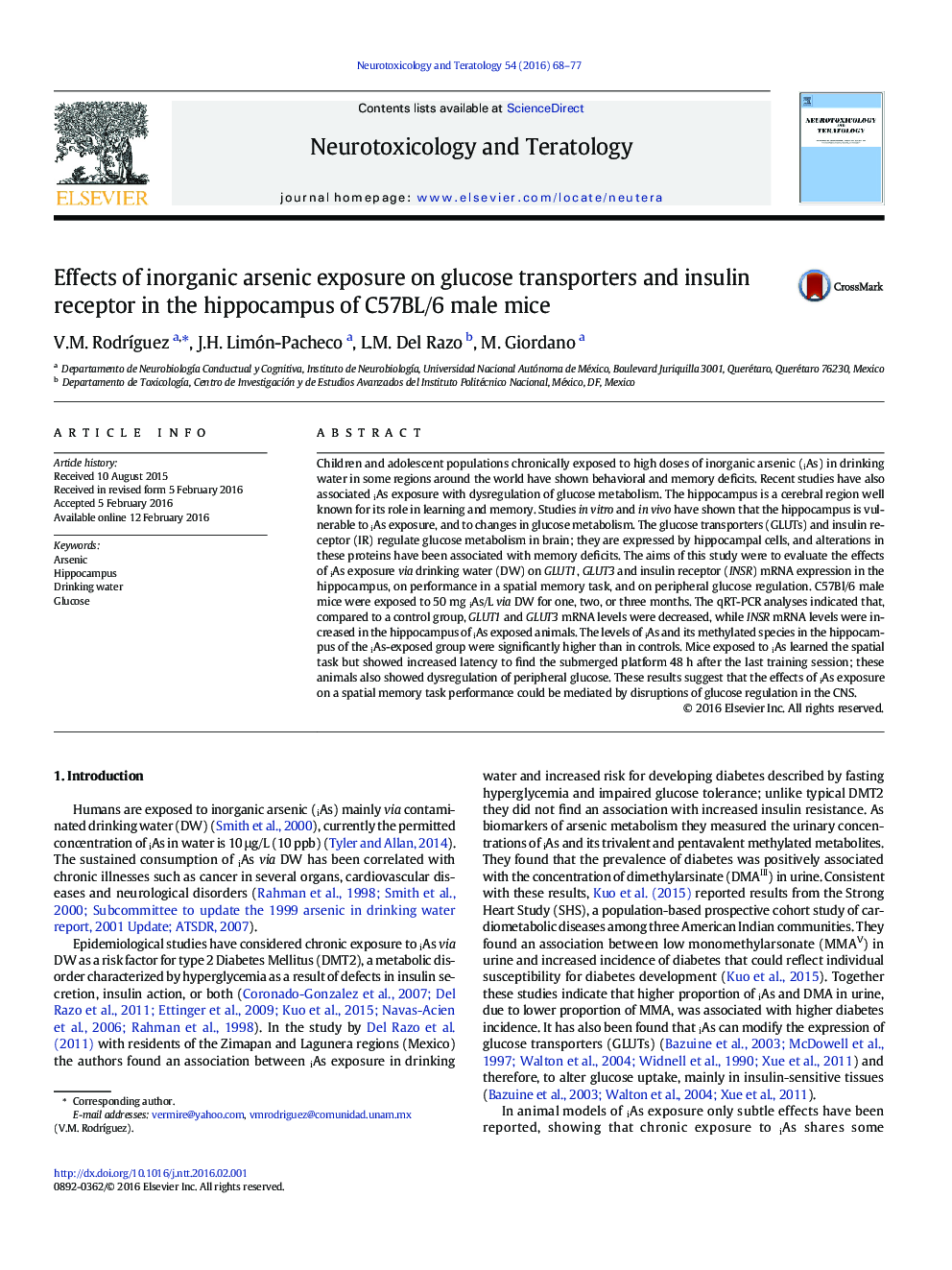| کد مقاله | کد نشریه | سال انتشار | مقاله انگلیسی | نسخه تمام متن |
|---|---|---|---|---|
| 2590837 | 1562082 | 2016 | 10 صفحه PDF | دانلود رایگان |

• Arsenic exposure decreases mRNA levels of glucose transporters 1 and 3 in the hippocampus.
• Arsenic exposure increases mRNA levels of insulin receptor in the hippocampus.
Children and adolescent populations chronically exposed to high doses of inorganic arsenic (iAs) in drinking water in some regions around the world have shown behavioral and memory deficits. Recent studies have also associated iAs exposure with dysregulation of glucose metabolism. The hippocampus is a cerebral region well known for its role in learning and memory. Studies in vitro and in vivo have shown that the hippocampus is vulnerable to iAs exposure, and to changes in glucose metabolism. The glucose transporters (GLUTs) and insulin receptor (IR) regulate glucose metabolism in brain; they are expressed by hippocampal cells, and alterations in these proteins have been associated with memory deficits. The aims of this study were to evaluate the effects of iAs exposure via drinking water (DW) on GLUT1, GLUT3 and insulin receptor (INSR) mRNA expression in the hippocampus, on performance in a spatial memory task, and on peripheral glucose regulation. C57Bl/6 male mice were exposed to 50 mg iAs/L via DW for one, two, or three months. The qRT-PCR analyses indicated that, compared to a control group, GLUT1 and GLUT3 mRNA levels were decreased, while INSR mRNA levels were increased in the hippocampus of iAs exposed animals. The levels of iAs and its methylated species in the hippocampus of the iAs-exposed group were significantly higher than in controls. Mice exposed to iAs learned the spatial task but showed increased latency to find the submerged platform 48 h after the last training session; these animals also showed dysregulation of peripheral glucose. These results suggest that the effects of iAs exposure on a spatial memory task performance could be mediated by disruptions of glucose regulation in the CNS.
Journal: Neurotoxicology and Teratology - Volume 54, March–April 2016, Pages 68–77